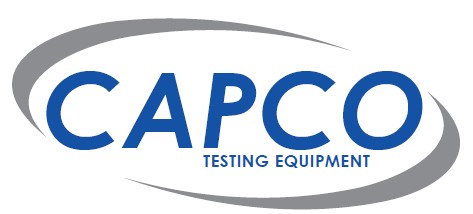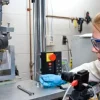Structural safety remains a cornerstone of sustainable development, influencing everything from skylines to societal well-being. Yet, beneath the imposing silhouettes of modern architecture lies an intricate network of testing protocols that safeguard millions. These methodologies have evolved from rudimentary stress assessments to sophisticated predictive analyses, creating a science that protects not just structures but their inhabitants.
Rhythmic Percussion: The Symphony of impact hammer Analysis
The resonance of steel and concrete reveals its secrets through deliberate percussion. Every structure possesses a unique vibrational signature a fingerprint of stability that engineers decode through careful analysis. The impact hammer methodology transforms this abstract concept into quantifiable data, creating vibrational responses that tell stories of structural integrity through frequency and amplitude.
When an impact hammer strikes a surface, the resulting vibrations travel through the material matrix like whispers through a canyon. These vibrations, carefully measured and analyzed, reveal microscopic weaknesses long before they manifest as visible failures. Engineers use this non-destructive technique to examine aging infrastructure, verify new construction quality, and predict potential failure points without compromising the structure itself.
The beauty of impact hammer testing lies in its elegant simplicity paired with sophisticated analytics. A precisely calibrated strike generates waves that sensitive accelerometers capture, converting physical movements into digital signatures. This allows engineers to compare actual performance against theoretical models, bridging the gap between design expectations and real-world behavior.
Holographic Data Landscapes in Structural Assessment
Modern testing transcends conventional boundaries, creating multidimensional representations of structural behavior. Imagine walking through a holographic model of a bridge where stress concentrations glow with varying intensity, or thermal signatures reveal hidden patterns of material fatigue. This immersive approach to data visualization transforms abstract numbers into intuitive understanding.
Testing now extends beyond individual components to systemic evaluation, examining how diverse materials interact under complex conditions. A modern high-rise isn’t just concrete and steel—it’s an ecosystem of materials, each responding differently to environmental factors. Advanced testing creates an integrated picture of these interactions, predicting emergent behaviors that simple component testing might miss.
The digital twin concept exemplifies this holistic approach. By creating virtual replicas of physical structures, engineers simulate decades of wear in compressed timeframes. These simulations incorporate historical data, material science, and environmental factors to predict structural evolution with unprecedented accuracy. The physical and digital realms increasingly converge, creating feedback loops that continuously refine both testing methodologies and structural designs.
Quantum Sensors and the Microscopic Realm of Material Science
At the cutting edge of structural testing lies a revolution in sensing technology. Quantum sensors detect subatomic shifts in material composition, identifying molecular changes long before they manifest as structural weaknesses. This microscopic vigilance provides early warning systems for infrastructure management, particularly in aging systems where material degradation accelerates unexpectedly.
These sensors measure not just current conditions but track degradation trajectories over time. By establishing precise baselines and monitoring minute changes, they create predictive models that inform maintenance schedules and intervention priorities. The approach shifts infrastructure management from reactive repair to proactive preservation, extending structural lifespans while optimizing resource allocation.
The science of material aging gains new dimensions through these advanced sensors. Concrete, once viewed as a static material, reveals itself as a dynamic entity that continues to transform decades after pouring. Steel experiences subtle molecular rearrangements under cyclical loading. Even modern composites display complex aging patterns that traditional testing might overlook. By capturing these subtle transformations, quantum sensing creates a new language for describing structural health.
Biomimetic Testing Protocols: Learning from Nature’s Engineers
Nature has spent billions of years perfecting structural solutions—from the honeycomb strength of beehives to the resilient flexibility of bamboo. Modern testing increasingly incorporates these biological lessons, creating biomimetic protocols that examine structures through the lens of evolutionary efficiency. These approaches often reveal counterintuitive insights that conventional engineering might overlook.
Consider how spider silk combines seemingly contradictory properties—remarkable strength with extraordinary elasticity. Testing protocols inspired by such natural materials often examine similar paradoxical qualities in human-made structures. A building’s ability to both resist and accommodate forces—rather than merely withstanding them—often determines its longevity. Biomimetic testing measures this adaptive capacity, quantifying resilience rather than mere strength.
The distinction proves crucial in extreme event scenarios. Structures that pass conventional strength tests may catastrophically fail under unusual circumstances, while seemingly weaker but more adaptable designs survive. By incorporating nature’s lessons into testing protocols, engineers develop more nuanced understanding of structural performance across wider parameter ranges, particularly for unprecedented conditions resulting from climate change.

Citizen Science and Distributed Structural Monitoring
The democratization of sensor technology transforms every smartphone into a potential structural monitoring device. Distributed networks of citizen scientists now contribute to massive datasets on building performance, bridge vibrations, and infrastructure responsiveness. These crowdsourced observations, properly calibrated and analyzed, create unprecedented visibility into how structures perform during daily use.
This participatory approach extends testing beyond controlled environments into the messy reality of actual usage patterns. A bridge experiencing unexpected vibrations during rush hour might prompt targeted professional analysis that traditional inspection schedules would miss. A building whose occupants report consistent discomfort during windy conditions might reveal design flaws that standardized testing overlooked. This human-centric feedback loop complements instrumental data with experiential insights.
The approach particularly benefits communities with limited resources for formal testing. Where governmental infrastructure monitoring remains sparse, citizen networks fill crucial knowledge gaps through accessible technology and local knowledge. These distributed systems create resilience through redundancy and diversity, ensuring that structural anomalies rarely go undetected regardless of official oversight capacity.
Ethical Dimensions of Structural Testing Advancement
As testing capabilities advance, so too does responsibility. Enhanced predictive capacity raises profound questions about disclosure obligations, intervention thresholds, and resource allocation. If advanced testing reveals potential structural issues decades before failure, what obligations exist to current versus future occupants? How do we balance immediate economic impacts of negative findings against long-term safety considerations?
These questions become particularly acute in economically disadvantaged communities where resources for remediation remain limited. Superior testing that merely identifies problems without facilitating solutions can exacerbate inequality rather than reducing risk. Ethical testing frameworks increasingly incorporate implementation pathways that connect findings with viable intervention strategies appropriate to community resources.
The tension between proprietary testing methodologies and public safety further complicates these considerations. When advanced testing capabilities remain locked behind intellectual property barriers, safety benefits distribute unevenly across socioeconomic divides. Progressive testing frameworks increasingly emphasize knowledge transfer alongside technical advancement, ensuring that safety benefits reach those most vulnerable to infrastructure failures.
Neuromorphic Computing and Intuitive Structural Analysis
The most sophisticated structural testing now incorporates computing architectures modeled on human neural networks. These systems process massive sensor arrays not as discrete data points but as interconnected patterns, creating almost intuitive insights into structural behavior. Like experienced engineers who “feel” when something isn’t right, these systems develop contextual understanding that transcends individual measurements.
This approach proves particularly valuable for structures with complex historical modifications. Many urban buildings represent archaeological layers of renovation, repair, and adaptation rather than unified designs. Conventional testing struggles with these hybrid structures, while neuromorphic analysis excels at identifying how disparate components interact under stress. The system builds comprehensive understanding through pattern recognition rather than predefined parameters.
The integration of historical performance data further enhances this capability. By incorporating records from similar structures under comparable conditions, these systems develop predictive models that account for factors traditional testing might miss. A building that performs adequately under normal conditions but shows subtle response patterns similar to structures that eventually failed receives heightened scrutiny. This pattern-matching capability proves especially valuable for unique or historically significant structures where conventional benchmarks prove inadequate.
In Conclusion: The Evolving Landscape of Structural Safety
The future of structural testing lies not in isolated technological advancements but in integrated systems that combine diverse methodologies into cohesive understanding. From the precisely calibrated strikes of an impact hammer to quantum sensors monitoring molecular changes, from citizen science networks to neuromorphic computing, these approaches form an interconnected ecosystem of structural vigilance.
This evolution transcends purely technical considerations, incorporating ethical frameworks, community engagement, and adaptive implementation strategies. The most advanced testing serves little purpose if findings remain inaccessible to those who need them most. As capabilities grow more sophisticated, so too must distribution mechanisms that ensure safety benefits reach all communities regardless of economic resources.
The ultimate measure of testing efficacy lies not in technical precision but in lives preserved and communities protected. Behind every data point, every vibration analysis, every stress test stands a fundamental human commitment to safeguarding those who trust in structural integrity without understanding its technical foundations. As we develop increasingly sophisticated testing methodologies, this core purpose must remain our guiding principle—creating not just structures that stand, but structures worthy of our trust.







